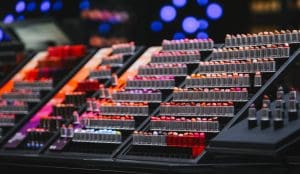The objective of your retail store is to move products. You need to encourage customers to make a purchase using a range of different strategies and techniques, from stocking the right products to having an effective pricing strategy. The layout of your store is important too.
The layout of your store affects customer flow and helps guide people around your store. It also helps to showcase your products in the most effective way possible, and it impacts the experience of customers, i.e., do customers enjoy shopping in your store?
In many respects, deciding on the layout of your store is the first step to effective store design. Here are the most common types of store layouts that you should be aware of.
Grid Store Layout
This is probably the one most people will be familiar with because it is the one that supermarkets use. In other words, aisles that are parallel and largely uniform, with checkouts close to the entrance/exit.
This layout offers a lot of advantages, particularly for retail stores with lots of different products and substantial product variation – like a supermarket. You can also guide customers through the store by putting the most commonly purchased items at the back. Grid layouts are also familiar to shoppers, and shelving solutions are commonly available.
This style of store is not very creative or interesting, however. It’s more about function than design and can lead to frustration with shoppers when used in the wrong situations.
Free Flow Layout
The free flow layout is a common layout in boutique stores and is often the favoured layout in shops where there isn’t much space available. There are really no rules with a free-flow design. Instead, it’s about being creative and using the space you have in the best way possible.
While it is common in small stores, it usually works best in high-end retail outlets that don’t have many products to display. It’s also good for experiential retail spaces, and where you want there to be plenty of free space.
The downsides are less space to display products, plus it can be confusing for customers. This style of layout can also have unintended consequences, where the free layout of the store leads to a lack of focus on good retail practice.
Spine Layout
This is where you have a single aisle running from one end of the store to the other, with products displayed on either side of the aisle. It is common in smaller spaces, particularly where there are lots of products to display.
The biggest downside is space, as it can feel cramped, particularly when the store is busy.
Loop or Racetrack Layouts
A store with a loop layout forces customers to follow a pre-determined route around the store. A variation of the loop is a racetrack layout, which has a more varied design but with the same principle.
This layout is often used to ensure customers pass every product as they walk through. It also presents opportunities to strategically locate promotions for maximum impact.
However, it doesn’t suit stores where people know what they want to buy before they go in, as it can cause frustration.
Solutions for All Store Layouts
Whatever layout you choose for your retail store, we have the products and solutions that you need. Browse our range of over 3,000 products today.




